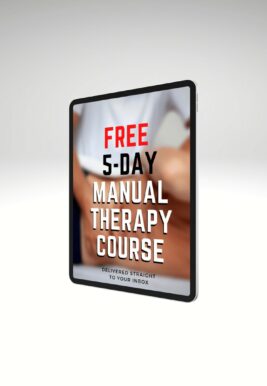Cuboid Syndrome after lateral ankle sprain | Diagnosis & Treatment

Cuboid Syndrome after lateral ankle sprain | Diagnosis & Treatment
Cuboid syndrome has also been referred to in the literature as subluxed cuboid, locked cuboid, dropped cuboid, cuboid fault syndrome, lateral plantar neuritis, and peroneal cuboid syndrome (Patterson et al. 2006)
Ankle sprains account for a big portion of lower extremity injuries with up to 40% of cases having residual symptoms. There is a hypothesis that the cuboid may be responsible for those cases in which lateral ankle pain persists. Newell et al. (1981) report that 4% of all athletes with foot problems present with cuboid syndrome. It appears that the condition has a higher prevalence in professional ballet dancers with up to 17% of reported foot and ankle injuries (Marshall et al. 1992).
Pathomechanism
The hypothesis for cuboid syndrome is based on history, clusters of signs and symptoms, differential diagnosis, clinical expertise, and of course mechanism of injury. It’s assumed that during a severe initial inversion trauma, torsion between the cuboid and navicular bone and cuneiform as well as the calcaneus leaves the cuboid in a relatively supinated position.
Use the manual therapy app
- Over 150 mobilization and manipulation techniques for the musculoskeletal system
- Fundamental theory and screening tests included
- The perfect app for anyone becoming a MT
Clinical Picture & Examination
This disposition remains painful, specifically over the calcaneocuboid joint, while tenderness over lateral ankle ligaments subsides.
Patients display antalgic gait with an increase in pain during the push-off phase and If pain allows for mobility testing, joint play is absent.
Examination
As previously mentioned differential diagnosis is necessary and the first step in assessing ankle sprains should be to exclude a fracture by using the Ottawa Ankle rules.
Midtarsal mobility testing in supination and adduction may reproduce the patient’s symptoms. According to Jennings et al. (2005), pronation and abduction may also elicit pain occasionally. The cuboid is unique as it is the only bone in the foot that articulates with both the tarsometatarsal joint (Lisfranc complex) and the midtarsal joint (Chopart’s Joint), and is the only bone linking the lateral column to the transverse plantar arch (Patterson et al. 2006). Therefore, it makes sense to assess both the Line of Lisfranc and the Line of Chopart during mobility testing.
Furthermore, the same authors recommend performing additional functional testing in the form of heel/toe raises or single-leg hopping. These activities are commonly difficult or impossible to perform due to pain.
Unfortunately, radiological evaluation does not seem to have added value in the diagnosis of Cuboid syndrome (Mooney et al. 1994).
Jennings et al. (2005) summarize the clinical findings as follows:
Subjective findings
- Mechanism of injury (plantar flexion/inversion)
- Pain location (lateral midfoot/ankle)
Objective findings
- Pain on palpation of the cuboid
- Positive midtarsal mobility testing (symptom reproduction)
- Positive dorsal/plantar and/or plantar/dorsal mobility testing(pain)
- Antalgic gait (most prominent during the push-off phase)
- Manual muscle tests—resisted inversion/eversion (pain and possible weakness)
- Functional testing (heel/toe raises or single leg hop testing)Differential diagnoses
- Radiological/imaging studies to rule out other pathologies
5 ESSENTIAL MOBILIZATION / MANIPULATION TECHNIQUES EVERY PHYSIO SHOULD MASTER

Use the manual therapy app
- Over 150 mobilization and manipulation techniques for the musculoskeletal system
- Fundamental theory and screening tests included
- The perfect app for anyone becoming a MT
Treatment
A technique that’s described in the literature is the reposition manipulation into relative pronation. It’s reported that following the manipulation, patients were pain-free the following day and could return to their activity.
Reposition manipulation
The patient lies supine with the legs extended and the foot hanging over the edge of the bench.
You’re going to stand medially to the foot and place hypothenar of your heteronymous hand on the lateral and plantar aspect of the cuboid just proximal to the base of the fifth metatarsal.
The hypothenar of the other hand is placed dorsally and medially on the cuboid which is lateral and proximal to the line between the third and fourth digit.
In this position, the forearms form a straight line. After you fold your hands together, the patient makes an active maximal dorsiflexion which pre-tensions the cuboid in submaximal eversion.
Build up compression through your elbows as well as increase the pre-tension in pronation direction.
Ask the patient to relax the foot and perform a pronation swing with both elbows combined with a compression impulse of both hypothenars.
Then slowly let go of the foot.
Cuboid whip manipulation
Another technique described by Jennings et al. (2005) is the cuboid whip manipulation:



The cuboid manipulation is performed with the patient in the prone position, starting with the knee flexed to 70° and the ankle near neutral (A). The knee is then passively extended as the ankle is plantar flexed with slight supination of the subtalar joint (B).A thrust force is applied using both thumbs on the plantar aspect of t he cuboid (C).
This technique is also illustrated in detail in our Manual Therapy App.
Other methods of conservative treatment including various therapeutic modalities, therapeutic exercise, low dye arch taping, and padding are adjuncts to the cuboid manipulation techniques (Patterson et al. 2006).
References
Newell, S. G., & Woodle, A. (1981). Cuboid syndrome. The Physician and Sportsmedicine, 9(4), 71-76.
Use the manual therapy app
- Over 150 mobilization and manipulation techniques for the musculoskeletal system
- Fundamental theory and screening tests included
- The perfect app for anyone becoming a MT
150+ Mobilization and Manipulation Techniques in Your Pocket


What customers have to say about the MT app





